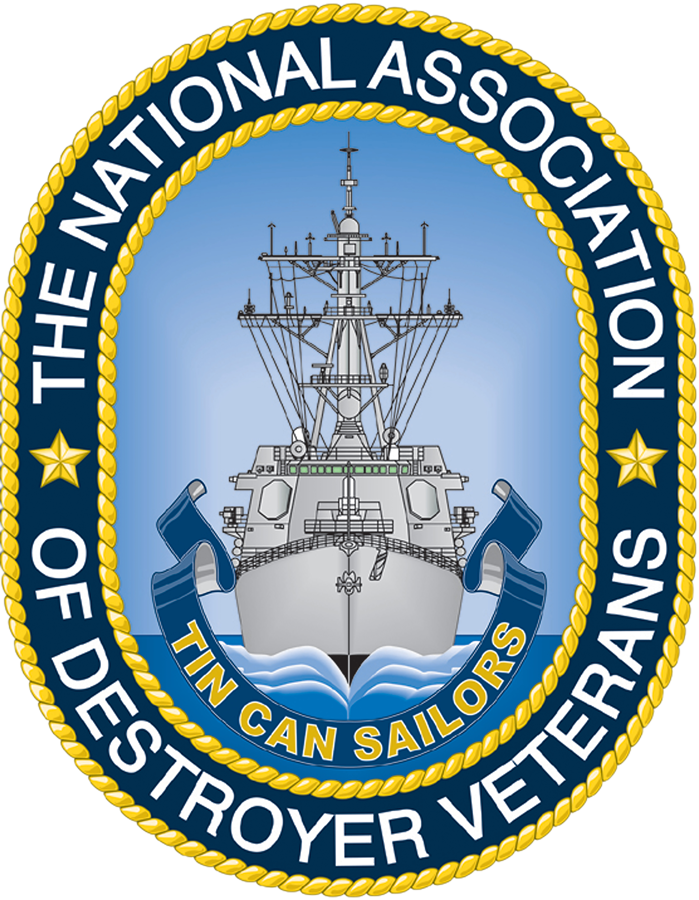A Tin Can Sailors Destroyer History
USS DOWNES DD-375
The Tin Can Sailor, April 1998
USS DOWNES would be the second MAHAN class destroyer to be built at the Norfolk Navy Yard; the second destroyer to honor Capt. John Downes.
Capt. Downes was named acting midshipman in 1800 and rose through the officer corps of the new American Navy with such luminaries as David Porter and Isaac Mull. At the end of his career, he was to serve as Commodore of both the Mediterranean and Pacific Squadrons. Downes passed away in 1854.
The new destroyer’s keel was laid on August 15, 1934 and she would be launched on April 22, 1936. Nine months later, USS DOWNES was commissioned.
Following brief operations in the Atlantic, DOWNES was transferred to the Pacific, where she operated from the fleet base in San Diego. In April, 1940, the fleet’s base was shifted to Pearl Harbor in the Hawaiian Islands, and DOWNES participated in extensive training exercises and cruises that ranged as far as Fiji and Australia.
DOWNES was scheduled for yard repair, so she was moved into the massive Dry Dock #1 in early December, sharing the facility with USS CASSIN (DD-372) and the fleet flagship, USS PENNSYLVANIA (BB-38). The second wave of attackers hit the dock area just before 0900, and all three vessels responded with a heavy curtain of anti-aircraft fire. A succession of bombs ripped through the thin hulls of the two destroyers, exploding fuel tanks and causing spontaneous explosions. Engulfed in flames, DOWNES was abandoned, as CASSIN rolled over onto the stricken tin can. By the end of the day, DOWNES was declared a total loss.
The salvage effort was commanded by then-Capt. Homer N. Wallin (he would retire as a Vice Admiral). Under Wallin’s expert direction, DOWNES’ hull was stripped of all useful equipment and the hull itself was scrapped. Carefully boxed and labeled, the hundreds of assemblies were shipped to Mare Island Ship Yard and reassembled in a new hull. USS DOWNES, complete with a new hull, a British-style bridge, and raised centerline torpedo tubes, was recommissioned on November 15, 1943.
DOWNES immediately went to war, escorting convoys from the West Coast to the forward areas and providing security for Eniwetok. Fire support missions off the islands in the Marianas alternated with screening duties for the task groups that ripped apart the Imperial Japanese empire in the central Pacific. Off Marcus Island, DOWNES took on a new role; that of actor.
The plan was to convince the Japanese that a landing was imminent, so Task Group 30.2, composed of three cruisers and six destroyers commanded by Capt. H. P. Smith, was ordered to took like an invasion. Hundreds of rounds were poured into the island, radar targets, attached to balloons, were launched, and floats were launched to simulate ship lights. Although the effect on the Japanese garrison was unreported, ADM William Halsey, Commander of the third fleet, enthused over an operation that he considered “brilliantly executed.”
After screening the task forces involved in the pivotal Battle of Leyte Gulf, DOWNES returned first to the fleet anchorage at Ulithi, then to Pearl Harbor for replenishment and repair. The process required almost five months.
The remaining months of World War II found DOWNES operating in the Marianas once again, patrolling and serving as an air-sea rescue vessel. Off Iwo Jima, DOWNES celebrated the announcement of the Japanese surrender. The destroyer began her homeward voyage an September 19, 1945.
DD-375 reached Norfolk on November 5, 1945 after visits to San Pedro, CA and Beaumont, TX. The veteran destroyer was decommissioned on December 17, 1945 and sold for scrapping on November 18, 1947.
USS DOWNES earned four battle stars for her service in World War II.
